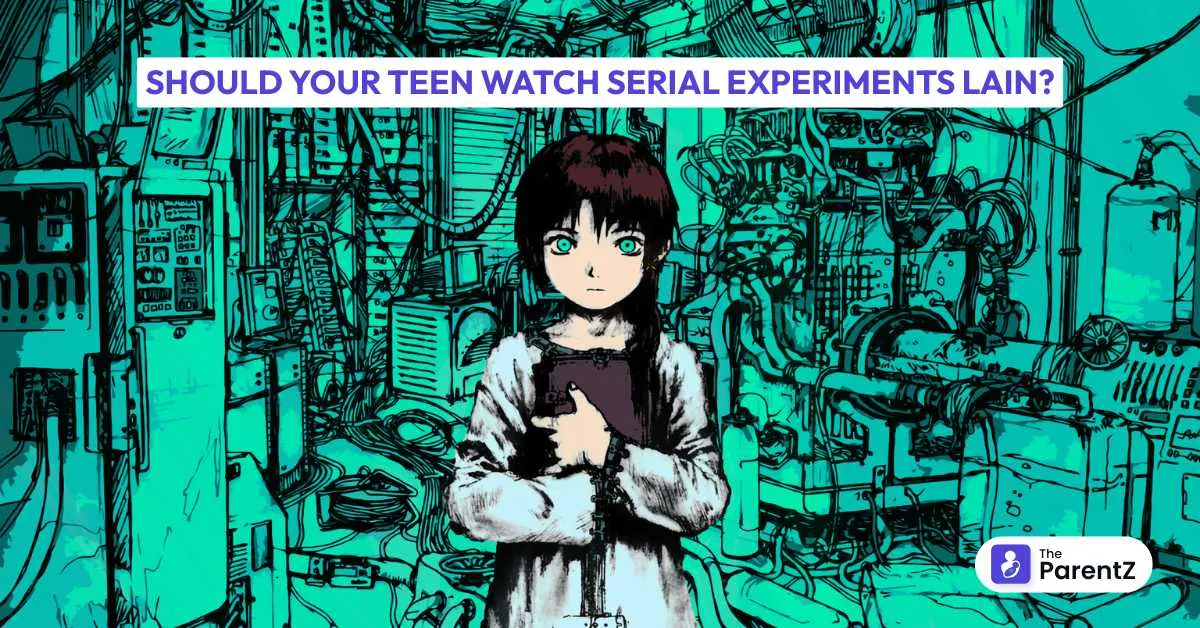A Parental Guide to Identity, Isolation, and the Digital Abyss
Introduction
There are shows that tell a story. Then there’s Serial Experiments Lain—a slow, haunting descent into the mind of a teenage girl losing touch with reality. On the surface, it’s a cyberpunk psychological thriller. But underneath, it’s a powerful reflection on loneliness, identity, and the way technology alters our sense of self.
This isn’t an anime for entertainment. It’s for reflection. And for teens, that difference matters a lot more than it seems.
Overview
The story begins when Lain Iwakura, a soft-spoken, socially withdrawn middle schooler, receives an email from a classmate who had just died by suicide. That’s the start of a slow unraveling.
As Lain begins exploring “The Wired” (a virtual network eerily similar to the internet), her life begins to blur. Is she dreaming? Is she awake? Are there two versions of her? Is she being watched, or is she the one watching?
Across thirteen deliberately-paced episodes, Lain’s journey shifts from a technological thriller to a philosophical exploration of identity, connection, and existence itself.
Themes
1. Isolation and Dissociation
Lain is the embodiment of alienation. Her family is distant, her classmates don’t understand her, and she finds solace only online. But as her digital self grows stronger, her real-world self starts to fade. This mirrors dissociation—where people emotionally disconnect from reality, often due to trauma or loneliness.
For teens who feel alone, this narrative can either feel validating—or dangerously relatable.
2. Internet Identity and Surveillance
The series predicted our digital age long before social media existed. Lain becomes famous online without meaning to. People talk about her, copy her, and monitor her movements. This taps into the modern teen experience: the pressure to be seen, followed, liked—and the fear of losing control of your own image.
3. Reality vs. Perception
At a certain point, the series stops distinguishing between what’s real and what’s imagined. Lain starts questioning if she even exists outside of others’ perceptions. These philosophical questions aren’t abstract for teens—they echo the exact struggles many face with self-image, peer pressure, and social isolation.
Age Preference
Recommended for: 16+
While there’s no gore or sexual content, the psychological depth and surreal storytelling require emotional maturity and focused attention. Teens who are still grounding their sense of reality may find it disorienting or emotionally overwhelming.
Who Should Not Watch
- Teens under 15
- Viewers prone to dissociation or intense loneliness
- Anyone expecting action, horror, or fast-paced storytelling
- Parents looking for educational or traditionally structured anime
The pacing is slow, the meaning often buried, and the emotional atmosphere intentionally heavy. It’s a show that demands patience and mental space.
Lessons From It
Despite its confusion, Lain has profound things to say—if you’re willing to listen. It’s a cautionary tale about digital dependence. It warns that when you lose your real-world connections, you start to exist only in fragments.
It also teaches that identity isn’t fixed. We change based on who sees us, what we believe, and how we connect. And if we aren’t careful, we risk losing the version of ourselves that can feel pain, joy, or human touch.
These are powerful messages—but only when processed thoughtfully.
Conclusion
Serial Experiments Lain is a slow burn. It doesn’t hand you answers. It whispers them through static, metaphor, and silence. For some, it’s life-changing. For others, it’s overwhelming.
If your teen wants to watch it, don’t dismiss it—but don’t leave them to navigate it alone. Watch with them. Talk after each episode. Ask how it made them feel. Because this isn’t just a show about technology—it’s about being human in a world that constantly tries to digitize, define, and dissect us.
And sometimes, the most powerful thing a parent can do isn’t to explain the show—but to sit in that stillness beside them, while they try to find meaning.









Be the first one to comment on this story.